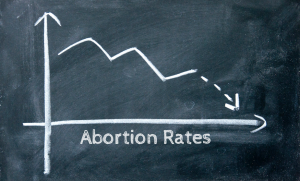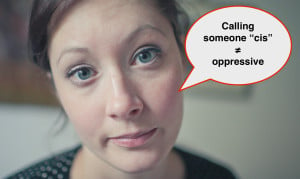Originally published on Mic and republished here with their permission.
Abortion rates are declining in America.
An Associated Press survey released this week found that abortions have declined in states that have implemented abortion bans as well as those where access to abortions is protected.
The Centers for Disease Control and Prevention also recently confirmed that as of 2011, the number of people obtaining abortions in the US hit a historic low, and a February Guttmacher Institute study identified a 13% drop in abortions between 2008 and 2011.
What remains an elusive mystery, however, is why.
Some have posited a variety of explanations, but like abortion itself, the decline in its prevalence can hardly be attributed to a singular, tidy cause.
Rather than try to explain the decline, therefore, it might be more useful to examine what this statistic reveals about the reality of abortion — and reproductive rights at large — in America today.
1. Access to Comprehensive Birth Control and Sex Education Decreases Abortions
While a variety of factors undoubtedly influenced the decrease, some have attributed the decline to better access to comprehensive birth control and sex education.
As William Saletan wrote in Slate, “The decline in the number of abortions, relative to the overall number of women aged 15 to 44, was due to a reduction in pregnancies, not to pregnant women choosing life.”
Among teens, the pregnancy rate has reached a historic low in recent years, which Carl Haub of the Population Reference Bureau told Reuters is partially due to better “educational efforts.”
Hawaii, which had the biggest decrease in abortion, offers comprehensive information about preventing pregnancy in public schools, Planned Parenthood’s Laurie Temple Field told AP.
Additionally, in 2014 the American Academy of Pediatrics officially recommended the IUD — a notably effective form of birth control — as the “first line” of contraceptives for teens.
The use of IUDs and other contraceptive implants did, in fact, increase 91% since 2009 among women accessing publicly funded contraceptive services, according to the AP report.
The ability of women to actively reduce pregnancies rather than retroactively choose whether to keep unintended pregnancies, experts note, is therefore likely a core reason for an overall decreased abortion rate — and furthermore crucial for women more generally.
“Expanding access to contraception, expanding support to families and to women who want to continue pregnancies and also expanding comprehensive sex ed are really effective ways at reducing abortion rates and reducing unexpected pregnancy rates in general,” Sarah Erdreich, author of Generation Roe: Inside the Future of the Pro-Choice Movement, confirmed to Mic.
2. Reducing Stigma Surrounding Single Motherhood May Also Decrease Abortion
Cultural stigma undeniably contributes to the choices women make about abortion, but traditional beliefs about pregnancy and marriage are certainly a driving force.
And yet, marriage may be considered less sacrosanct than ever.
In his conservative case for single motherhood as a contributing factor of this decline, writer David Frum argued in the Atlantic, “As marriage fades, unwed motherhood has evolved from an acceptable outcome to something close to an inevitability. The order of choices in the face of an unexpected pregnancy has thus shifted again: single parenthood, abortion, shotgun wedding and adoption.”
Many experts acknowledged this as a logical explanation.
Erdreich told Mic, if women “feel like there’s less of a stigma to being a single mother and that there’s more support in whatever form they need, then that definitely makes it easier and more realistic to continue their pregnancy to become a mother.”
But others are skeptical that increased acceptance of single motherhood is currently the dominant reality and therefore influences decisions about abortions.
“I think we have a long way to go before there is broad societal acceptance of all the different kinds of families that exist,” Kimberly Inez McGuire, director of public affairs of the National Latina Institute for Reproductive Health told Mic. Young mothers, she said, still face “shame and stigma and judgment simply because they’re young mothers” on a daily basis.
3. Reducing Access to Abortion Does Not Decrease Abortions
While it may seem counterintuitive, the effort to make abortions difficult or impossible to obtain will deter women from having abortions is actually inaccurate.
In fact, the AP report found the only states with significantly more abortions since 2010 were Michigan (up 18.5%) and Louisiana (where abortions increased 12% between 2010 and 2014).
The attributing factor? Restrictions in neighboring states.
Ben Clapper, executive director of Louisiana Right to Life, told the AP that abortions for nonresidents jumped by more than 1,200 between 2010 and 2012, and pointed to new restrictions in Mississippi and Texas as additional reasons for these increases.
Clinic closures and passed abortion bans in states like Ohio and Texas didn’t prevent women in those states from having abortions, but rather drove women across state lines.
“As states across the country are making abortion harder and harder to access, people will flock to states where there are more abortion clinics,” Steph Herold, managing director of the Sea Change Program told Mic.
“About 70 abortion clinics closed since 2010, so of course the abortion rate will go down if there’s nowhere to actually get an abortion,” she observed.
This doesn’t mean that women will stop getting abortions though, but that when they do, they will be burdened with spending “even more money to travel, to get off work, to get childcare and find a place to stay.”
When states restrict abortion, therefore, “numbers go down in the state where you have those restrictions, but that doesn’t mean that women won’t try and find other ways to find an abortion if that’s what they feel they need to do, and you see that in the rise of abortions in neighboring states,” Erdreich summarized.
4. Aggregate Data Shouldn’t Erase Individual Experiences
Despite this overarching statistic, it’s crucial to remember that abortion access and the decision to try to access it “looks different in every state, and it looks different for different women,” McGuire noted.
“Across the nation, access to health care is determined in large part by where you live, how much money you make, your immigration status, and a host of factors that make it that much harder for Latinas, women of color, and low-income women to get the care they need,” McGuire told Mic.
Access to abortion is a completely different experience “for someone who has health insurance, for someone for whom English is their first language, who has access to transportation,” McGuire continued, adding, “I think it’s important to remember the individual experiences of women and their stories because data like this, while important, doesn’t tell the whole story.”
Herold agreed.
“Seeking an abortion when your insurance won’t cover it, when you’re really living month-to-month, when you have to sacrifice paying your rent in order to pay for the cost of an abortion is just totally different than most white, middle-class women who are able to kind of pool resources and get an abortion when they may need one.”
5. Rather Than a Lower Abortion Rate, We Should Ultimately Aim for a Lower Unintended Pregnancy Rate
While interestingly both liberals and conservatives alike have claimed this lower rate as a victory, the rate itself ultimately isn’t “inherently good or bad,” Herold told Mic.
A reduced abortion rate, she noted, is less of an indicator of women’s actual well-being or a reduction in the social and cultural conflict over abortion than is the rate of unintended pregnancies, she noted.
“Our goal should be for people to have control over their reproductive lives with access to abortion and contraception and prenatal care in a stigma-free, compassionate, acceptable environment,” she explained.
6. We Can’t Become Complacent
Ultimately, focusing on the myriad causes for this decline may be less important than how we approach the future.
“I think that there is a danger of becoming complacent and saying, ‘Oh, abortion rates are coming down, case closed,'” Erdreich said.
“I think that women and men who value being able to make their own decisions about reproductive health would do well to look at this report … because in a lot of states abortion is only legal in name. So many states are still passing ever more creative and restrictive laws against abortion, and there’s still a lot of work to be done.”
No matter the abortion rates, it’s crucial to focus on decreasing shame and stigma surrounding abortion and increasing women’s autonomy.
“Rather than debating the nationwide drop in abortion rates, we need to be working to ensure that every person who needs abortion care can access it, regardless of economic status,” Nikki Madsen, executive director of the Abortion Care Network told Mic.
Given the historic increase in abortion bans, she noted, “It’s essential that we work to overturn these laws so that independent abortion care providers can focus their energy on providing patient-centered reproductive health care, which includes both long-acting contraception and abortion, which people from all socioeconomic backgrounds need and want.”
[do_widget id=’text-101′]
Julie Zeilinger is a staff writer at Mic as well as the founder and editor of The FBomb (thefbomb.org), a feminist blog partnered with the Women’s Media Center. She is also the author of “A Little F’d Up: Why Feminism Is Not A Dirty Word” and “College 101: A Girl’s Guide to Freshman Year.” Follow her on Twitter @juliezeilinger.
Search our 3000+ articles!
Read our articles about:
Our online racial justice training
Used by hundreds of universities, non-profits, and businesses.
Click to learn more





















